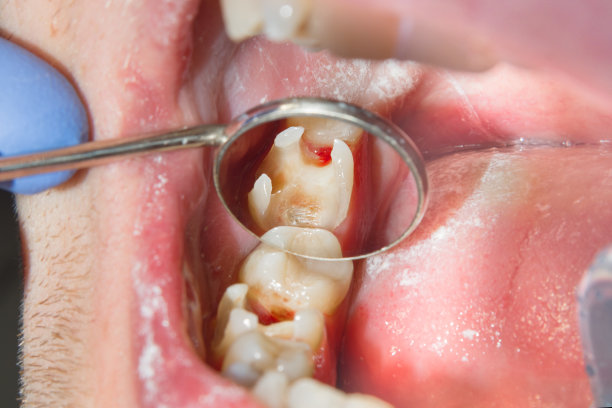Understanding the Dental Procedure and Aftercare for Extracting a Tooth Safely and Effectively
Summary: This article provides an in-depth exploration of the dental procedure for tooth extraction and the essential aftercare required for safe recovery. Beginning with an overview of the extraction process itself, we detail the steps involved from the initial consultation to the procedures conclusion. Next, we discuss the various types of tooth extractions, examining surgical versus simple extractions. The importance of pre-and post-operative care is highlighted, providing guidance on how to prepare for the surgery and what to expect during recovery. Finally, we delve into common complications following extraction and their management. Through this comprehensive analysis, readers will gain a nuanced understanding of tooth extraction, empowering them to approach the process with confidence.
1. Overview of the Tooth Extraction Process

The tooth extraction process begins with an initial consultation with your dentist or oral surgeon. During this appointment, the dental professional will assess your dental health through x-rays and a physical examination. They will determine if extraction is necessary and discuss the risks and benefits associated with the procedure.
Once a decision is made, the dentist will explain the steps involved in the extraction. Simple extractions, typically performed under local anesthesia, are for teeth that are visible and easily accessible. Surgical extractions, on the other hand, may require sedation and are used for impacted teeth or those broken below the gum line.
On the day of the procedure, the dentist will apply anesthesia to ensure you are comfortable throughout the process. The extraction itself involves loosening the tooth from its socket and carefully removing it, followed by cleaning the area to minimize the risk of infection.
2. Types of Tooth Extractions Explained
Tooth extractions fall into two main categories: simple and surgical extractions. Simple extractions are routine procedures typically performed on teeth that are fully erupted. The dentist can easily grasp these teeth with forceps and remove them with minimal discomfort.
Surgical extractions are more complex and may involve making incisions in the gum tissue to access the tooth below the surface. This type of extraction is common for wisdom teeth or other teeth that are not fully erupted. Your oral surgeon will ensure that you are adequately sedated and comfortable throughout the procedure.
Understanding the type of extraction you will undergo is crucial, as it affects your aftercare and expected recovery time. Your dentist will provide detailed instructions tailored to your procedure, ensuring you are well-prepared.
3. Pre- and Post-Operative Care Essentials
Preparing for a tooth extraction is an essential component of the process. Your dentist may advise you to avoid certain medications, especially blood thinners, to minimize bleeding risks. Its also recommended to arrange for transportation home, as the effects of anesthesia can impair your ability to drive.
Post-operative care plays a vital role in ensuring a smooth recovery. After the extraction, biting on a gauze pad helps to control bleeding. You may experience swelling, which can be managed with ice packs applied to the cheek area. Medications for pain management will also be prescribed if necessary.
In the days following the extraction, it’s important to stick to a soft food diet and avoid using straws, which can dislodge the blood clot forming in the extraction site. Your dentist will provide specific guidelines to follow during this recovery period, which is crucial in preventing complications.
4. Managing Common Complications Post-Extraction
While most tooth extractions are straightforward, there are potential complications that may arise. One common issue is dry socket, where the blood clot fails to form or becomes dislodged, leading to pain and delayed healing. If you experience symptoms of dry socket, its important to contact your dentist immediately.
Infection is another risk following a tooth extraction. Signs include increased swelling, fever, or severe pain that worsens over time. If you notice any of these symptoms, prompt communication with your dentist is vital for appropriate treatment.
Lastly, some patients may experience prolonged bleeding. While minor bleeding is expected in the hours following the procedure, excessive bleeding that does not stop should be addressed by a dental professional. Careful attention to your symptoms and following post-operative care instructions can significantly reduce the risk of complications.
Summary:
Understanding the tooth extraction process, including the types of extractions and the critical pre-and post-operative care, is essential for a safe and effective outcome. By being proactive and following guidelines provided by your dentist, patients can foster a smoother recovery and manage any potential complications. Armed with this knowledge, individuals can face the prospect of tooth extraction with confidence and reassurance.
This article is compiled by Vickong Dental and the content is for reference only.



